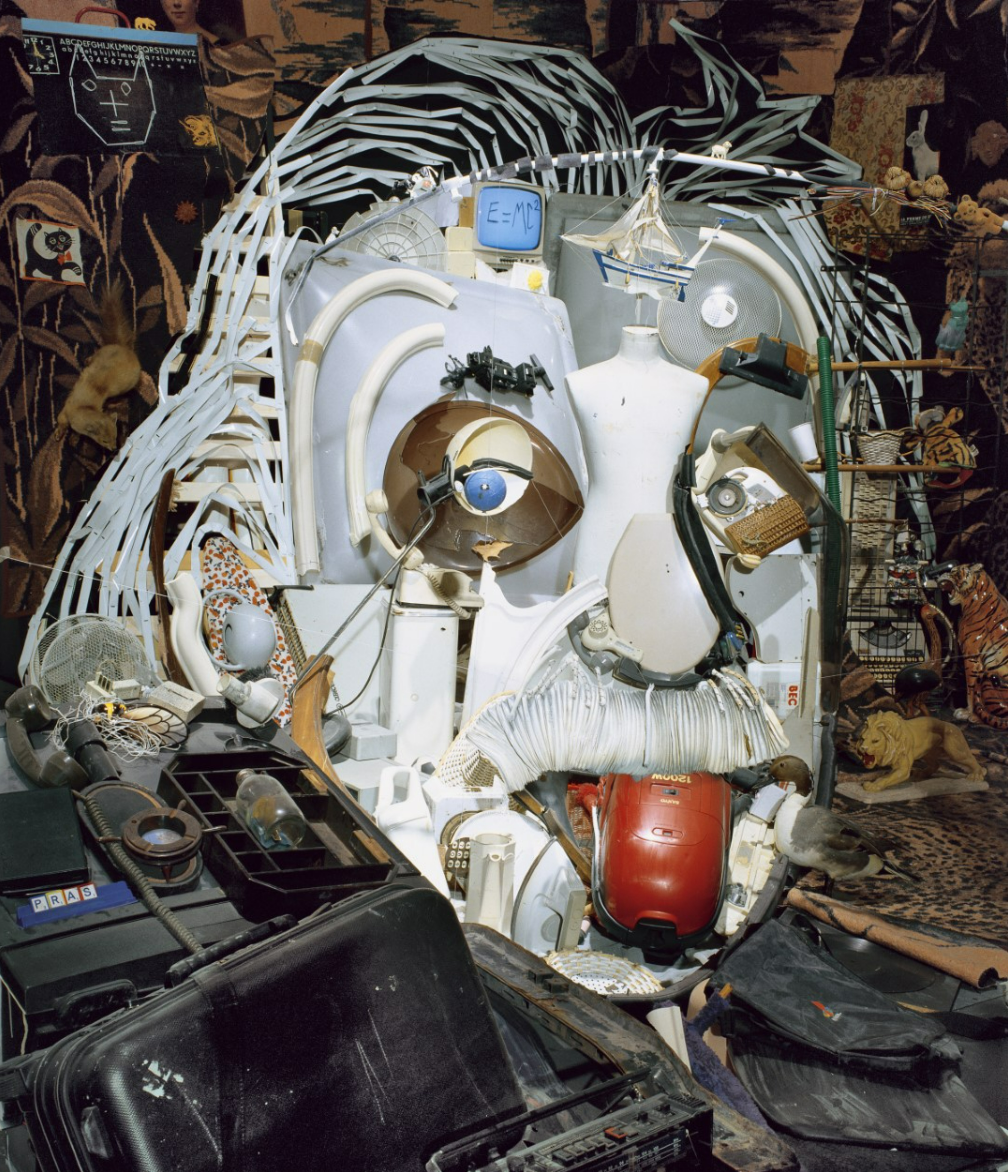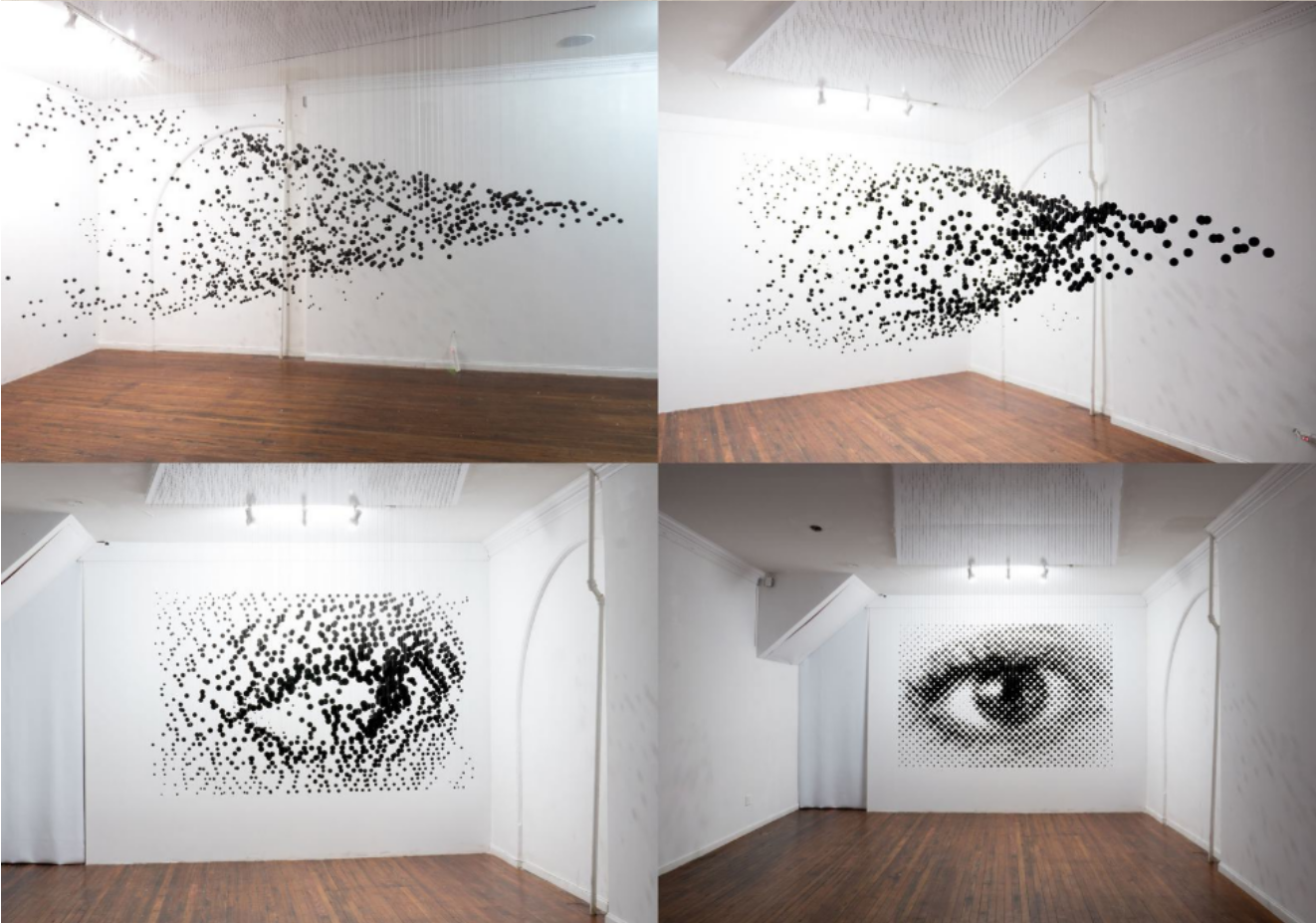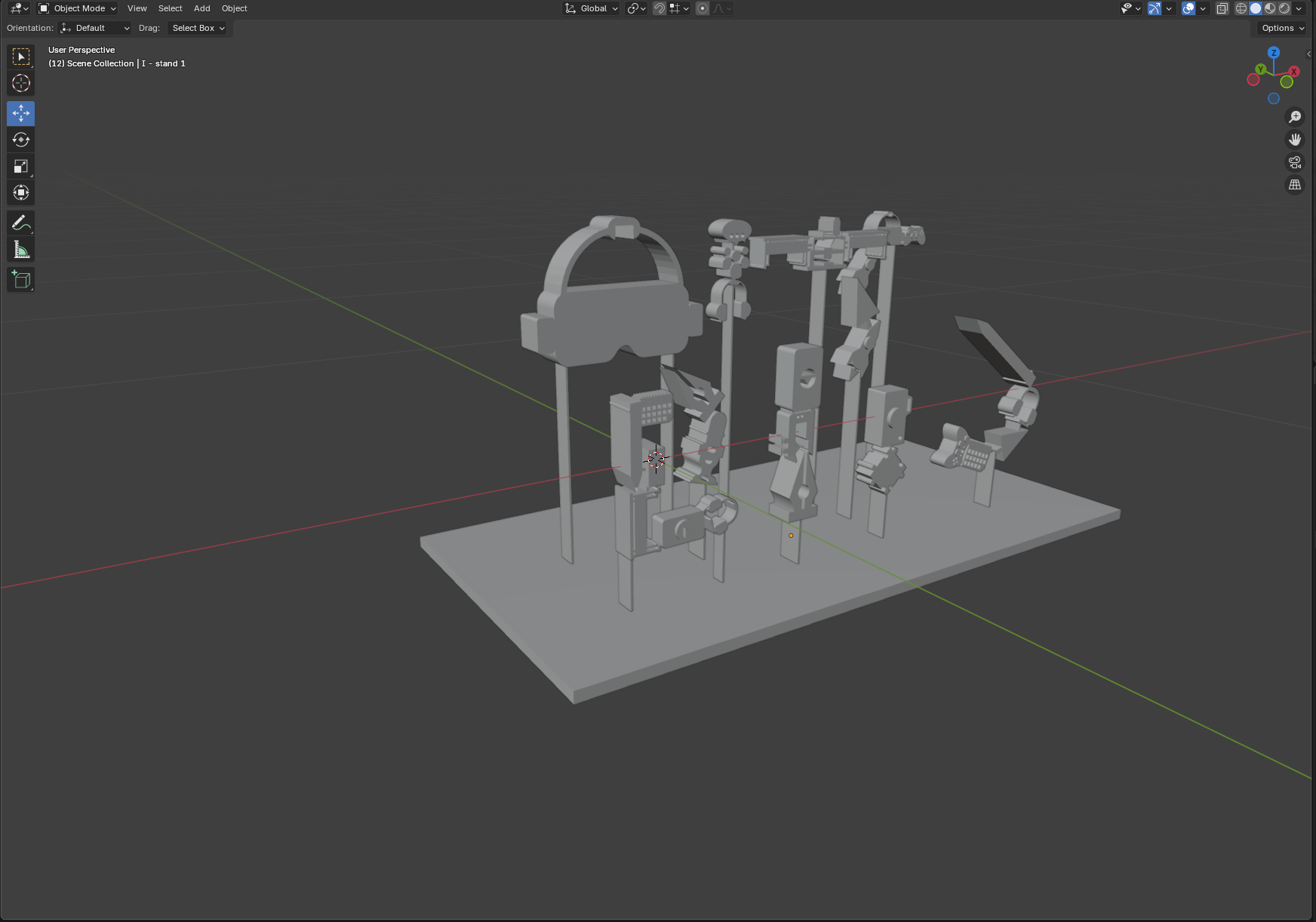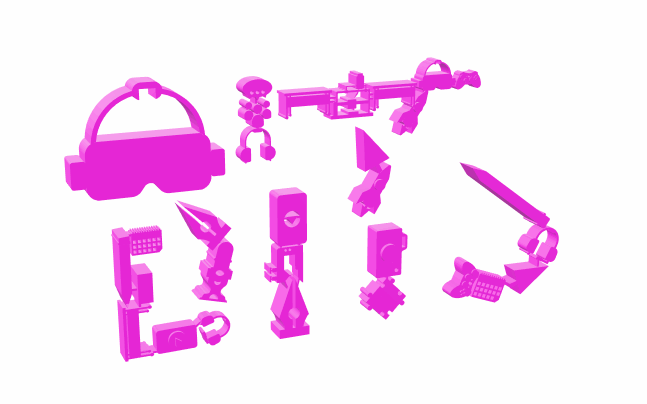BITS and Pieces: See It From the Right Angle
Why Your Eyes Are About to Play Tricks on You
Ever looked at a pile of random junk and suddenly **BOOM** it snaps into a perfect portrait?
That mind-bend is the heart of perceptual-shift art.
👇 Below, you’ll see the stop-motion video of the designed BITS logo.
You can also explore the AR 3D model example — just scan the AR QR!
How the Magic Works
From most angles: Total chaos: floating shapes, household trinkets, blobs of color.
From one angle: Click! Everything lines up into a crystal-clear image — face, logo, you name it.
Artists use our brain’s love of patterns against us: they scatter parts in 3-D space, but set a secret vantage point where the puzzle solves itself.
Two Masters of the Illusion
Bernard Pras
Builds portraits out of everyday stuff like brooms, bottles or panels.
You see a messy garage... Move two steps left and it`s Albert Einstein.

Micheal Murphy
Suspends hundreds - even 1,252 – painted wood balls or panels.
His piece “Perceptual Shift” looks like confetti mid-explosion until you stand on the X-mark. Suddenly: flawless eye hovers in mid-air.

Why We Love It
Interactive: the art changes as you walk
Mind-bend factor: reminds us perspective shapes reality
DIY-friendly: with 3D printing (hello, BITS logo!), anyone can dabble in spatial sorcery.
So next time you spot a “random mess” in a gallery (or our vitrine ), hunt for that spot. Your brain will have aha! Moment :D
Key Takeaways
In this interdisciplinary mini-project, you will explore the intersection of 3D design, visual illusion, augmented reality, and animation by creating a perceptual-shift sculpture inspired by Michael Murphy’s Perceptual Shift.
It connects spatial reasoning, storytelling, and maker tools into one creative, hands-on showcase.
Working with Blender, you can design a multi-layered version of the BITS logo—where separate icons (representing spaces like VR, Podcasting, 3D Printing, etc.) align into a coherent image when viewed from one precise angle. The project combines spatial planning, illusion techniques, and digital sculpting.
Once the digital model is completed, you can:
-
3D print the layered elements using filament-based printers
-
Create a physical display
-
Export the design for web-based Augmented Reality (AR) and host it online, accessible via QR code
-
Animate the sculpture using a stop-motion video (capturing assembly and viewpoint shift)
▶ Apply 3D modeling techniques in Blender
- Apply 3D modeling techniques in Blender, including extrusion, layering, and object alignment
- Understand and implement the concept of perceptual shift / anamorphic illusion
- Prepare a digital model for physical fabrication (3D printing)
The final result will look like below in Blender;

You can see the procedure in detail attached as a PDF file below;
You can follow along the procedure step by step and make your own perceptual design in Blender.
▶ Publish an interactive WebAR experience
- Create and share WebAR scenes that are viewable on mobile browsers without app installation.
The final result will look like below in 3D space;

You can see the procedure in detail attached as a PDF file below;
By implementing this procedure, you can have the AR version of your design in real environment.
▶ Plan, shoot, and edit a stop-motion animation
- Develop a basic stop-motion sequence using physical objects and editing techniques.

You can see the procedure in detail attached as a PDF file below;